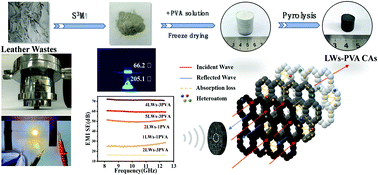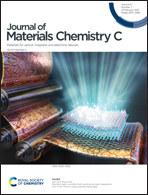Trash into treasure: stiff, thermally insulating and highly conductive carbon aerogels from leather wastes for high-performance electromagnetic interference shielding†
Abstract
Humans have used animal leather materials for thousands of years. Nowadays, the disposal of Cr-containing leather wastes (LWs) is an urgent problem. Herein, by adopting simultaneously conventional freeze-drying and high-temperature pyrolysis carbonization technology with the assistance of our independently developed solid state shear milling (S3M) technology, new LWs–polyvinyl alcohol (PVA) carbon aerogels (CAs) were prepared. The interaction between LWs and PVA could promote the formation of carbon skeleton, the carbon layer structure had a certain embedding effect on Cr and no highly toxic hexavalent Cr was produced. Thanks to the unique heteroatom doping and interconnected three-dimensional porous structure, LWs–PVA CAs had an ultra-high electrical conductivity (1.9436 S mm−1) among other similar products. These characteristics made it applicable in the field of electromagnetic interference (EMI) shielding, as the average shielding efficiency (SE) could reach up to 62.66 dB in the X-band. In addition, LWs–PVA CAs displayed superior mechanical properties, with extremely low thermal conductivity (0.108 W mK−1) and thermal diffusivity (0.200 mm2 S−1). The whole preparation process is simple, low cost, and suitable for mass production, and is expected to effectively reduce the pollution problem caused by traditional incineration and landfill of LWs.

- This article is part of the themed collection: Journal of Materials Chemistry C HOT Papers


 Please wait while we load your content...
Please wait while we load your content...